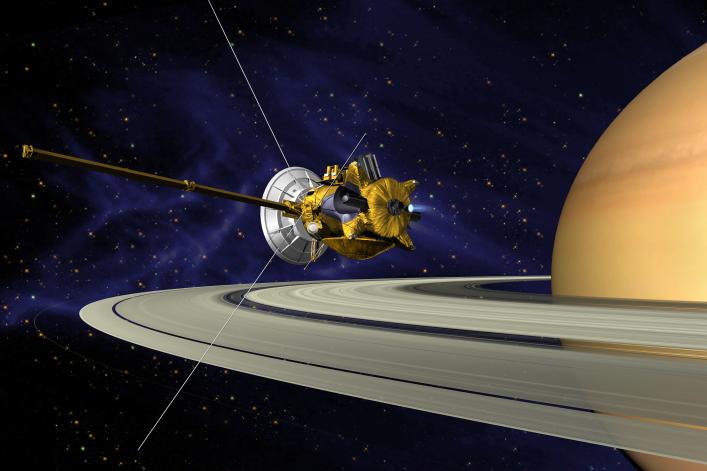This Friday, the Cassini spacecraft, which has orbited Saturn since 2004, will end its mission by crashing into Saturn. It happens to be the Catholic memorial of Our Lady of Sorrows. It is indeed a sad day to see Cassini go. This spacecraft has transmitted 635 GB of data back to Earth, helping us understand more about the Universe we live in.
Why is Cassini crashing? We intend to send future missions to the Saturn system and especially wish to explore Saturn’s moons Titan and Enceladus. Although we may not expect to find life on these moons, they possess several conditions for life that we need to study in more detail. For this reason, we need to avoid any possibility of contaminating their environments. The surest way is to crash Cassini into Saturn while there is still enough fuel left to control it. On Monday morning, Cassini received its last gentle push from Titan, altering its orbit enough to plunge into Saturn’s atmosphere this Friday. There is no turning back now.
Cassini completed its first mission back in 2008. Still in good shape, it received funding to continue exploring the Saturn system through additional missions. During its first mission, it released the Huygens probe, which landed on the surface of Titan and transmitted a small amount of data.
I first heard of Cassini in 2008 when I found an exhibit for it at the American Museum of Natural History in New York City. Back then I never would have thought that I’d be involved in Cassini science. Here I am in grad school though, working on a research project involving Saturn’s rings and moons, thanks to the success of the Cassini spacecraft. The next missions to the outer planets and their moons can’t come soon enough.


